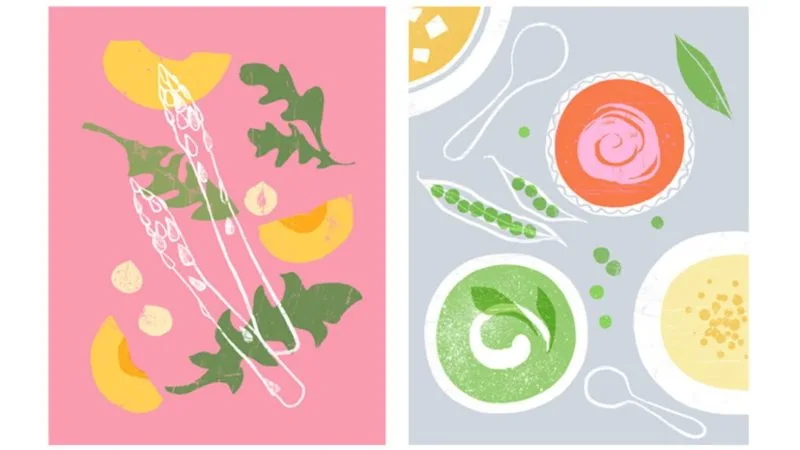
PLAY HIDE AND SEEK WITH VEGETABLES!
May 4, 2022
SOME ADVICE FROM DAD – ON HOW TO STAY A SANE PROFESSIONAL
May 18, 2022We all know that clothing is, in a sense, an identification tool that can function in determining the symbolic boundaries between people. Fashion and clothing are a field where clothes are used to create and reveal a cultural and social identity. The identity phenomenon of the person is embodied in body by clothing and fashion.
The most visible material item of the fashion is garment, which carries multiple and various meanings. The dynamism of the garment symbol can carry open or closed codes depending on culture, gender and social location. But now also, emotions.
This new innovation in the fashion sector not only represents your identity, but also emotions, emotional wellbeing and expression. According to Psychology Today, the definition of emotional well-being is “the ability to practice stress-management techniques, be resilient, and generate the emotions that lead to good feelings.”
In contemporary society, where many people struggle with their mental health, trauma recovery and anxiety, sharing their feelings and seeing emotions as a visual expression of identity is very interesting. What would a society look like if we could see each other’s emotional wellbeing and share ours as well?
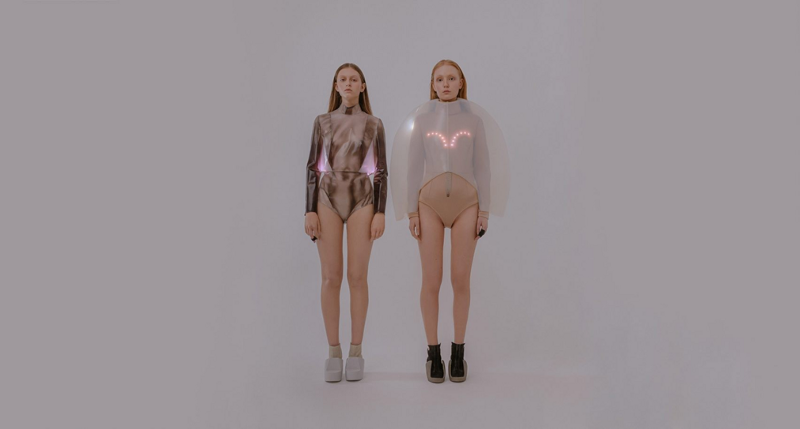
Emotional Clothing responds to the wearer’s changes in stress levels
Iga Węglińska, a Polish multidisciplinary designer and researcher specialized in human–garment interactions and working in the fields of fashion and product design with a focus on new technologies and materials, created a collection called ‘The Emotional Clothing Collection’. This collection consists of two tops that change colour or flash with lights to help the wearer identify when they are feeling stressed or anxious.
The Emotional Clothing collection, which formed Węglińska’s doctoral dissertation at the Academy of Fine Arts in Krakow, is designed to “broaden the experience of clothing”. “Emotional Clothing is made of polysensory garments intended to expand the limits of experiencing clothing through experiences based on sensory substitution,” Węglińska said.
When the brain takes information from one sense, such as touch, and turns it into the perception of another sense, such as sight, it is known as sensory substitution. It is widely used to assist people who are vision-impaired use their sense of touch to read braille.
“The collection is designed to stimulate our sense of taking part and force us to focus more on our bodies, for example by calming our breath to reduce a stress level,” the designer added.
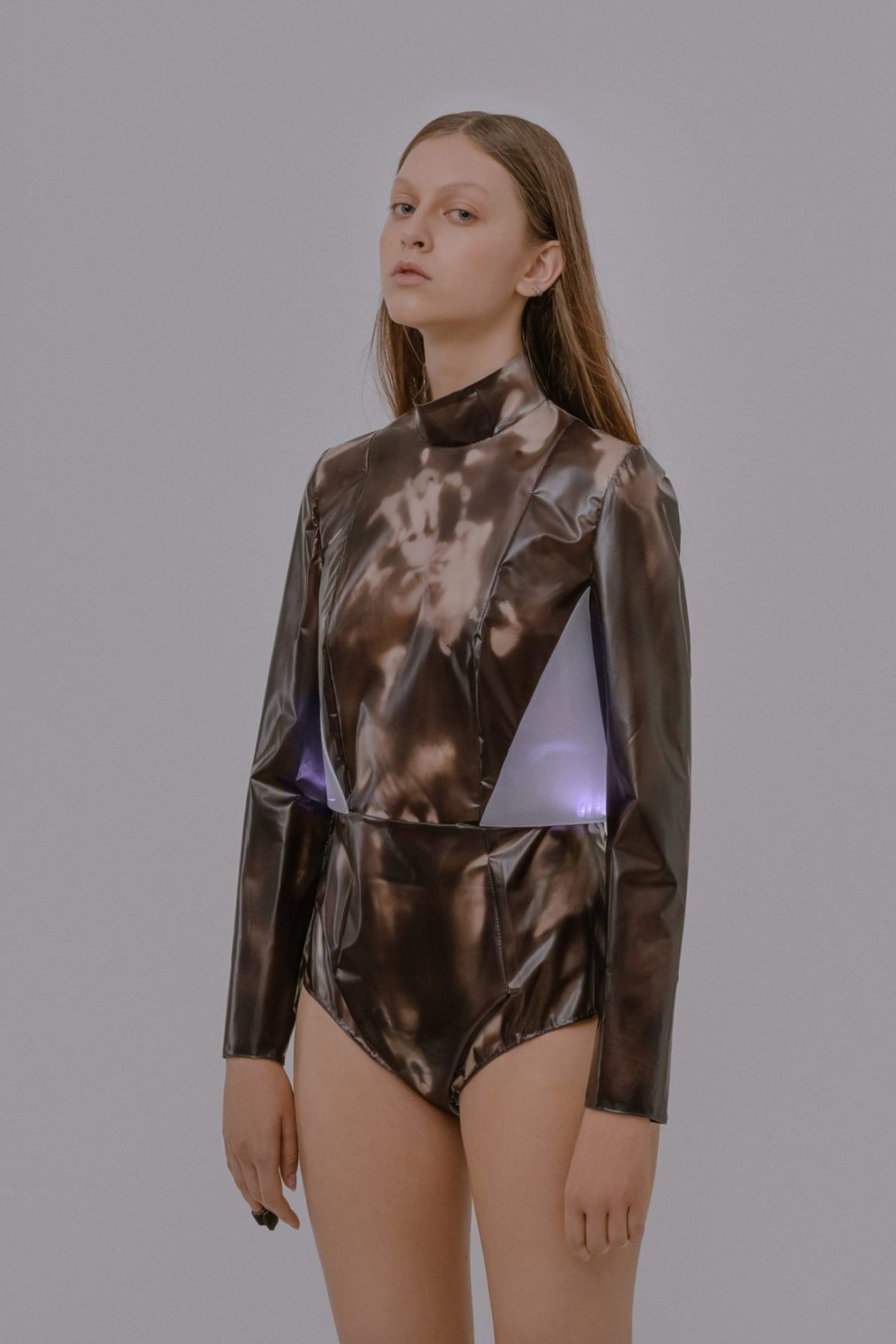
Węglińska’s garments react to the wearer’s heart rate, temperature and Galvanic Skin Response (GSR) via sensors, which, in turn, trigger visual lighting changes. Stress usually causes a rise in temperature and a faster heartbeat.
One of the long-sleeved tops has a sleek turtleneck and is slim-fitting. It changes color from dark to translucent in response to body temperature and heart rate.
Lights incorporated into the sides of the top flash to the beat of the wearer’s heart via information gathered from sensors attached to the wearer’s fingers.
The other top has a puffy, balloon-like silhouette and features a string of pink LED lights above the chest. It measures stress levels by sensing changes in sweat levels on the wearer’s skin.
The sensor sends a signal from the sweat to a white light that runs along the arms and around the neck. When the colour changes from warm to cold, it symbolises the need to slow your breath and calm down. A conductive thread is used to sew conductive materials in the tops together. This thread carries an electrical current, which allows light to travel.
Węglińska hopes that the tops could help people who become stressed or anxious to calm down or practice mindfulness after seeing the item change color. This is similar to biofeedback — a therapeutic technique that aims to help people understand their bodies better with sensors that measure key bodily functions.
“The intelligent materials used in the tops are supposed to stimulate cognitive involvement and mindfulness,” the designer said. “By interacting with the pieces, the wearer can not only be informed about their own body changes, but they can help us to focus more about the intimate relation of clothing, control the body reactions or even set goals to achieve by playing with smart material reactions like color changes or movement.”
The designer experimented with many smart materials, evaluating the input and output signals to identify the one that performed best, with the help of a chemist and a programmer. She employed a combination of materials, including neoprene, thermoplastic polyester or polyurethane leather, and polylactic plastic, in the end. The resulting tops are meant to mimic the behavior of human skin.
“Any relations to the human skin in my designs aimed to underline the prosthetic nature of the works, as well as emphasize the intimate relationship with the object,” she explained. “Skin — like my concept — reacts to psychophysiological changes in the human body: it sweats, blushes and it has goosebumps.”
To test the sensors, Węglińska recruited a group of study participants to wear the clothes. She measured their levels of hedonic arousal using smart materials samples.
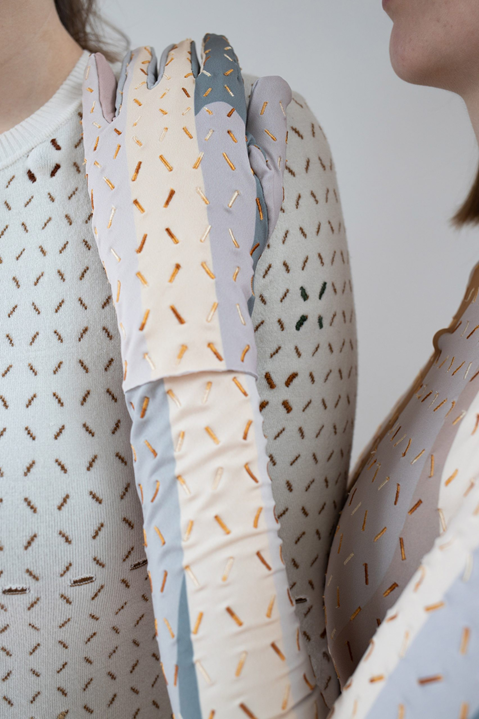
Trauma healing garment by Laura Deschl combine design and integrative therapy.
Design Academy Eindhoven graduate Laura Deschl — Social Designer and Artistic Researcher with a background in Fashion & Textiles — has developed The Healing Imprint, a therapeutic garment that looks like activewear but is made to help heal trauma.
The project was developed to experiment to see if combining acupressure — a non-invasive technique originating in traditional Chinese medicine — with yoga-like movement may help people recover from psychological trauma. Deschl produced custom-knit garments with a grid stitched into them that allows small massage balls to be inserted and moved onto specific acupressure points on the body, feet, hands and head.
The garments’ aesthetic is similar to activewear or leisurewear, and a full set includes a bodysuit, gloves, socks and a pillow. The concept is to combine acupressure with a yoga-inspired embodied movement practice that allows a person’s bodyweight to increase pressure at the targeted “acu-points.”
Deschl based The Healing Imprint on research that indicates how physical therapies can be integrated into psychotherapy to assist patients healing from psychological trauma, a technique known as integrative therapy. She was particularly inspired by the work of Bessel van der Kolk, whose 2014 book, The Body Keeps the Score documents the effects of trauma and an array of methods that can be used to treat it.
“I was inspired by how he is incorporating ‘untypical’ ways of healing trauma, such as through yoga, tapping and community,” Deschl said. “My research also encompassed certain other thinkers, but their take on healing trauma through the body is somehow similar,” she continued. “One thing is certain: they are all convinced that the body needs to play a major role in overcoming the imprint left on the body caused by a traumatic event.”
Post-traumatic stress disorder (PTSD), as well as trauma-related anxiety and depression, have all been treated with acupressure. The acupressure in The Healing Imprint clothing attempts to assist the wearer access buried memories or emotions, while the trauma-sensitive yoga practice will help the user reflect on those experiences.
Deschl said that a person’s body and their emotions are “two elements that are crucial for one’s sense of self, but are often highly impaired as a result of trauma”. “Many people with histories of trauma and neglect experience an extreme disconnection from their body due to a deep divide between the sense of self and sensory experiences,” said Deschl. “The goal of this project is to help patients train embodiment and thus bring them closer to their bodies.”
One of The Healing Imprint garment sets is knitted from predominantly merino wool plated with an elastic yarn, which was produced specifically for the project. A second set with meridian patterns is made from a recycled knitted athleisure fabric, while the massage balls are gemstones.
Deschl worked with a psycho-motor therapist to enable test sessions with trauma patients, and the Healing Imprint contains a series of pictures showing where to position the balls for certain symptoms. “The garment is not only an interface for an individual to access embodied knowledge and self-awareness, but also represents how design can converge fields such as science, business, medicine, psychiatry and textile-making,” said Deschl.
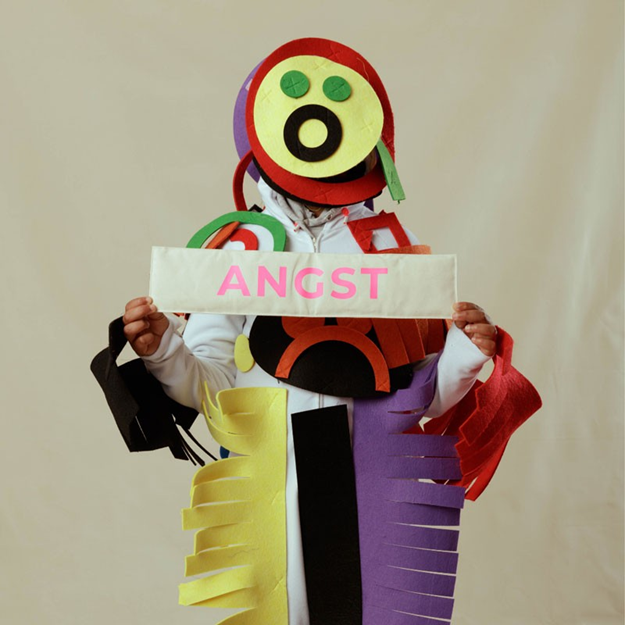
Taskforce Fashion — Residency for Responsible Fashion
Commissioned by and in close collaboration with the , Taskforce Fashion started in 2018, as a unique, multidisciplinary and research-based collaboration between fashion platforms FASHIONCLASH, M-ODE and State of Fashion. In co-creation with Dutch design talent and in dialogue with the (inter)national fashion field and other disciplines, the three platforms investigate the transformative role of fashion in relation to social issues with various experiments.
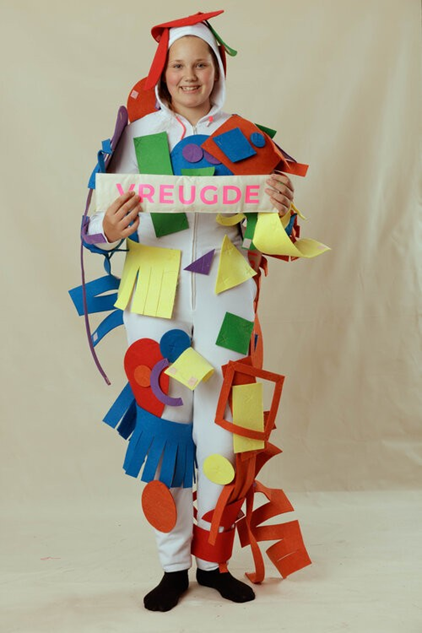
In the autumn of 2020, Taskforce Fashion started an experiment called ‘Residency for Responsible Fashion’. During this experiment, the designers were challenged to question the current reality and the fashion system, in order to eventually offer possible solutions for the future. Through field trips, desktop research and in-depth conversations with experts from the field, the teams investigated the social-cultural challenges of the cities Tilburg, Maastricht and Rotterdam.
COVID-19 and it restraints challenged the designers to find new ways of presenting their design- through-research. Rather than merging the different team projects into one presentation, each team created their own local platform. This way, the projects could be presented in a meaningful place with a close relation to the research. From an exhibition space to a primary school class: unconventional and creative solutions were thought of.
Every team had a different focus point. Team Maastricht focused on solutions that support Positive Health, which is defined as having a resilient and meaningful life. Physical, psychological, and spiritual functioning, as well as quality of life, social participation, and day-to-day functioning, will be examined. What role may clothes design have in improving one’s well-being? The social participation of children and teenagers in society will be given special consideration. They hosted a day full of workshops with the children of the ‘Manjefiek Malberg school.’ The designers encouraged the kids to communicate about their feelings in a creative and engaging way through a series of fashion-related workshops. What do they wear to reflect the emotions of ‘awe,’ ‘anger,’ and ‘happiness’? What memories are evoked by some of their t-shirts, and how might we trade
them? The workshops were built around these and many other questions. In addition, the group developed a manifesto on the intertwined nature of social and emotional growth and development.
The results were presented at TextileMuseum, Tilburg, in the last couple of months.
What can we expect from the future?
Combining craft and technological details gives garments a perceived value far greater than ‘just a piece of clothing that represents your identity’. Seeing clothes as a representation of emotional wellbeing could help people better understand their own feelings and feelings of others. These emotional clothing pieces become a representation of self-expression and understanding.
Raising the spirits of a generation who is growing up in a world where they feel powerless, full of bad news, restrictions, and anxiety, and dealing with this on a mental health level, these innovations and understanding of emotional wellbeing would give a deeper sense of personal expressionism. An emerging wave of creative consciousness, a new dimension of expression identity and the true self, inspired by the need of reflection and healing.
Sources
https://www.betteryou.ai/what-is-emotional-well-being/ https://dergipark.org.tr/tr/download/article-file/543644 https://taskforcefashion.nl
https://textielmuseum.nl/en/tentoonstellingen/panoramadeck-presentation-hosted-by-taskforce- fashion/
https://www.dezeen.com/2021/12/12/iga-weglinska-emotional-clothing-stress-body-changes/ https://www.dezeen.com/2021/10/28/design-integrative-therapy-laura-deschl-trauma-garments/

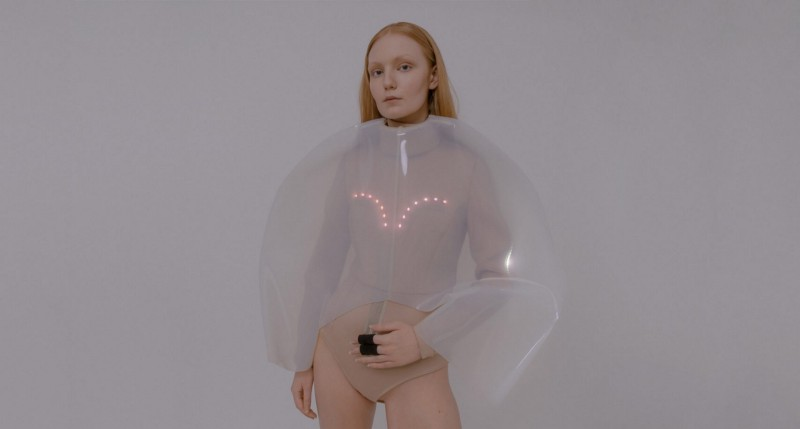

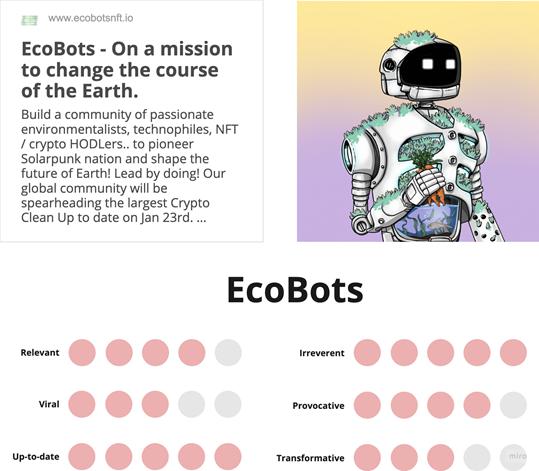
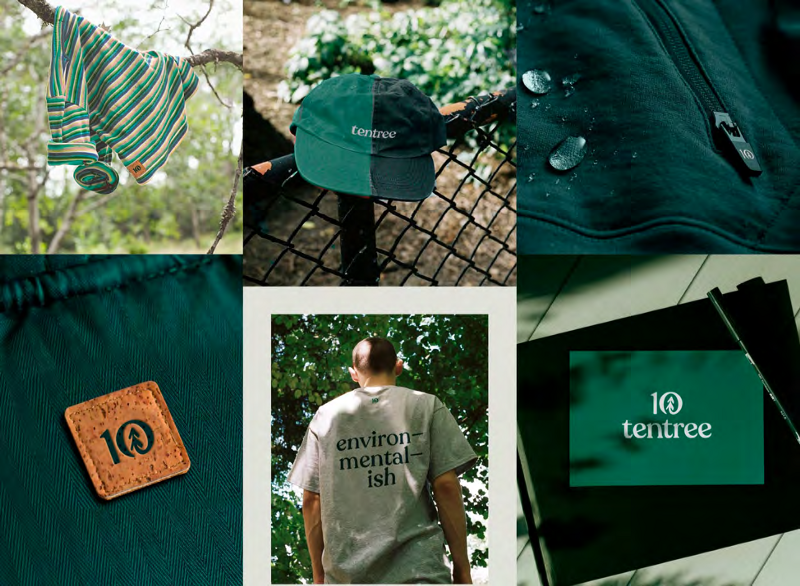
5 Comments
Well written and documented Isabeau! Because of the way you have explained it to us, I see the coolness and growth potential. Normally I would not have considered it to be cool or have growth potential. It’s the argumentation that made this post valuable and understandable. Keep up the good work!
I find it intriguing, but I’m not sure I’d want to wear it. My mental health/anxiety is a sensitive aspect of me, and I’d rather hide about how I’m feeling at the time than reveal it to others.
Isabeau! Thanks for your Cool & persistent contributions. Always a good and thorough read. The Emotional Clothing collection. Will be a growing market for it. But, I gather not for all all the time. There will be many occasions I don’t want to show what my emotions are – especially when I am not in control what I show. Maybe there will be some very, very interested target groups – people with diseases, for instance. I thank you, my dear. Carl
“These emotional clothing pieces become a representation of self-expression and understanding.” This reminded me of the Alte movement, where people seek unique styles and express themselves with. Very Cool blog Isabeau, thanks for sharing
Great idea, it may take time to be used/adopted by society though.